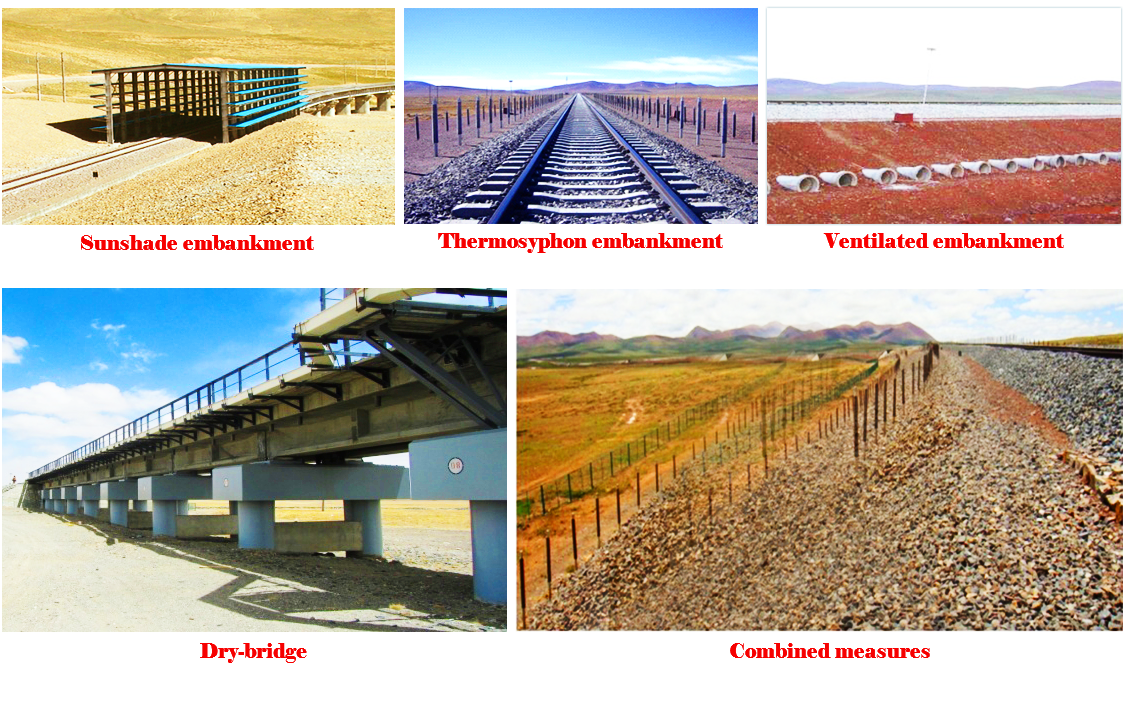Frozen Ground in China
About 75% of the area of China experiences ground freezing.A recent map of frozen ground in China shows that the total area of permafrost in China is estimated to be ~ 1.59*106 km2 (glaciers and lakes excluded), while the area of seasonally frozen ground (excluding instantaneous frozen ground) is ~ 5.36*106 km2. The total area of high-altitude (plateau and mountain) permafrost in China is~ 1.35*106 km2, of which the area of mountain permafrost is ~ 0.30*106 km2 and the area of plateau permafrost is ~ 1.05*106 km2. Latitudinal permafrost is located in the northern part of northeastern China, and its area is ~ 0.24*106 km2 (Ran et al., 2012; Fig.1).
Permafrost in China has warmed in the past few decades. Permafrost temperatures have increased and the thickness of permafrost has decreased. A significant increase in thickness of active layer has been verified by long-term ground temperature observations at various sites.

Permafrost Engineering in China
To deal with railway construction on warm and ice-rich permafrost, academician Cheng proposed a roadbed cooling approach for the construction of Qinghai–Tibet Railway. The key to the success of the construction lies in preventing thaw of permafrost beneath the roadbed. Based upon the experience and lessons learned from roadway construction over permafrost, Cheng (2005) proposed a more proactive design approach for the construction of the Qinghai–Tibet Railway. This approach focused on cooling down the roadbed by lowering the ground temperature and differs from the passive method of preventing permafrost from thawing by simply increasing thermal resistance (e.g., increasing embankment height and using insulating materials). This roadbed cooling design approach is especially relevant to warm and ice-rich permafrost areas. Cheng and his colleagues developed a number of measures to cool down the roadbed, including proper selection of roadbed material and configurations to adjust solar radiation, heat convection, and heat conduction patterns in and/or around the roadbed (Fig. 2).
